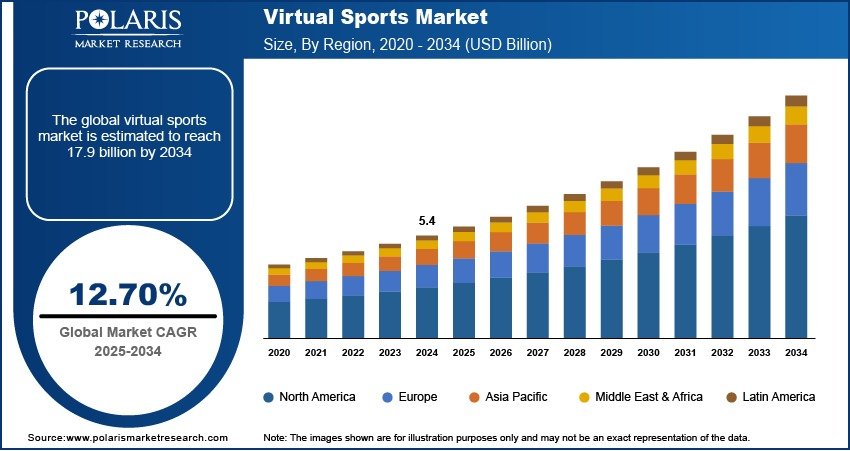Virtual Sports Market is projected to reach USD 17.9 billion by 2034, growing at a CAGR of 12.70%.

Revenue forecast in 2034 – USD 17.9 billion
CAGR – 12.70% from 2025 – 2034
Request for Free Sample:
https://www.polarismarketresearch.com/industry-analysis/virtual-sports-market/request-for-sample
Market Overview:
The virtual sports market refers to digitally simulated sports events that are created using advanced animation and algorithm-based technologies. These virtual games replicate real-life sports such as football, horse racing, basketball, and cricket, and are primarily used for entertainment and betting purposes. Virtual sports are widely offered by online gaming platforms, sports betting operators, and casinos, providing users with immersive and continuous gameplay experiences regardless of live sports schedules. As digital entertainment consumption grows, the virtual sports market is becoming an integral part of the broader iGaming and esports ecosystems.
Key Market Growth Drivers:
A major driver of growth is the rising popularity of online gambling and fantasy sports, particularly in regions with expanding internet penetration and smartphone adoption. Advances in graphics technology, AI, and virtual reality have significantly enhanced the realism and engagement levels of virtual sports, attracting a broader audience. Additionally, the need for 24/7 content availability—especially during off-seasons or global disruptions like the pandemic—has increased reliance on virtual sports by betting platforms. Partnerships between game developers and sports leagues to create licensed virtual experiences are also fueling market expansion.
Market Challenges:
Despite its potential, the virtual sports market faces challenges related to regulatory restrictions and varying legal frameworks across different jurisdictions, which can limit market access and operational scalability. Concerns around problem gambling and the ethical implications of simulating real-world sports for betting purposes also pose reputational risks. Moreover, high development and licensing costs can be a barrier for smaller players entering the market. Ensuring fair play, maintaining user trust, and differentiating from traditional sports betting offerings remain ongoing challenges for industry participants.






